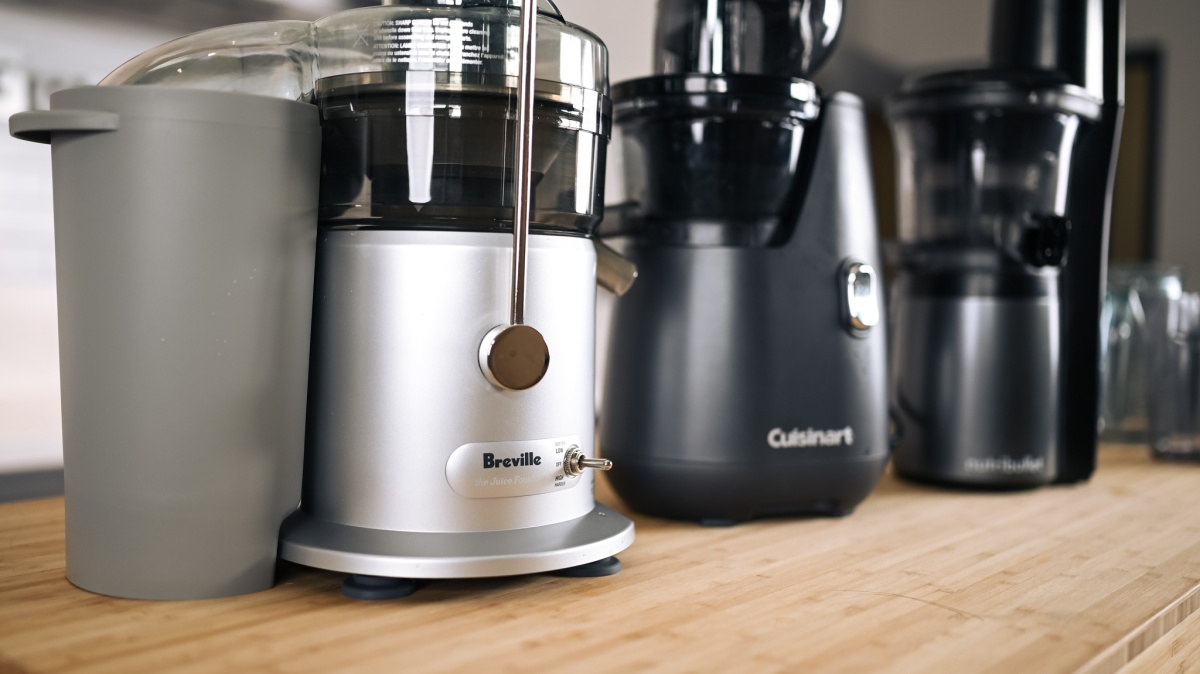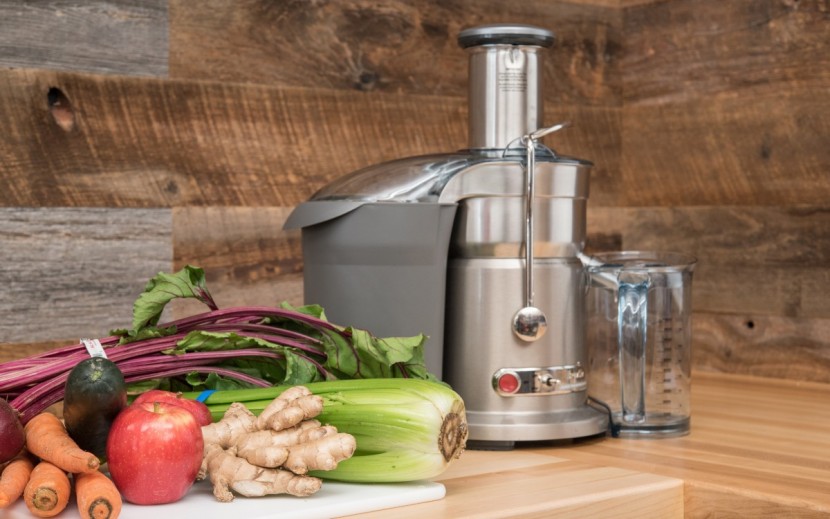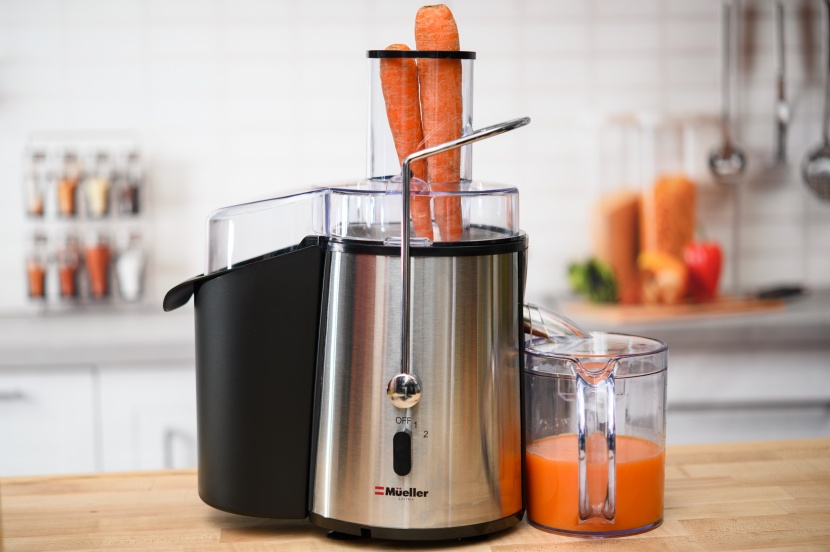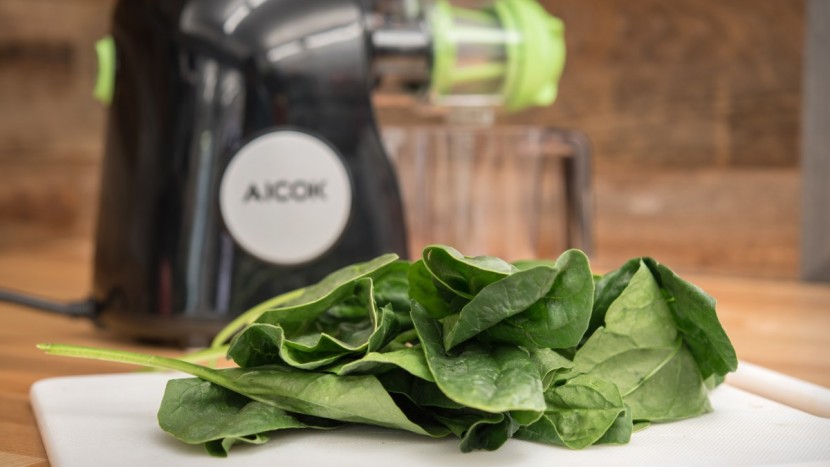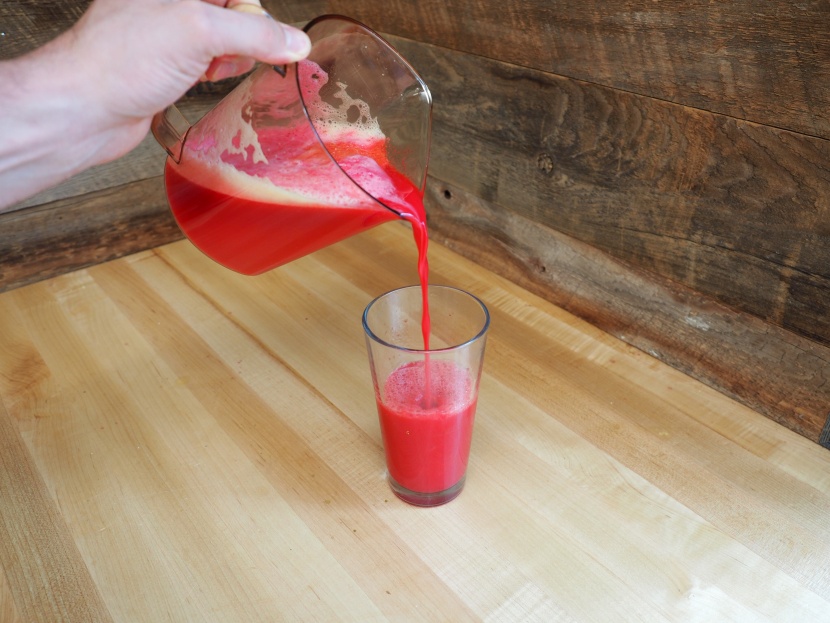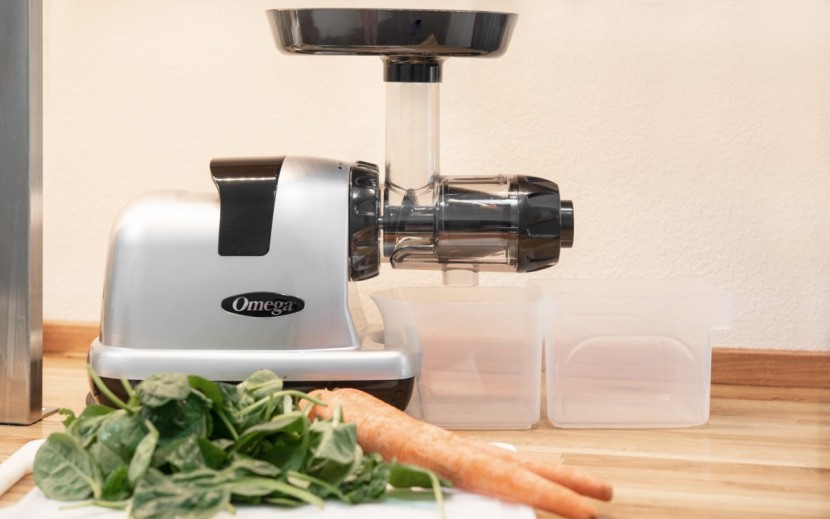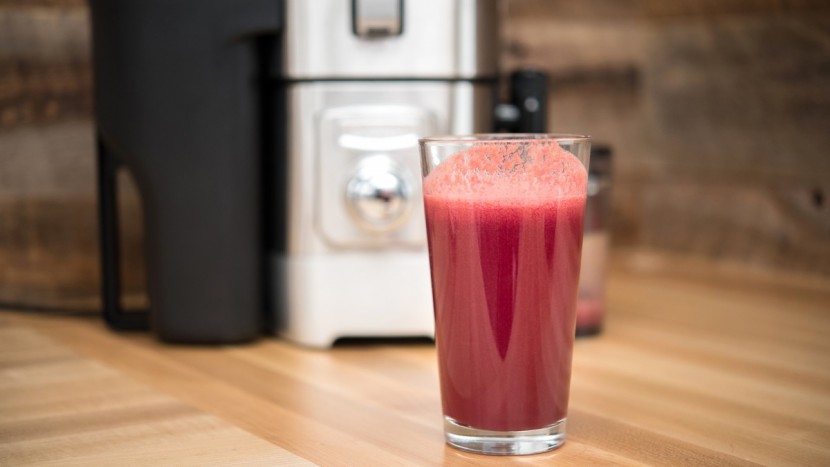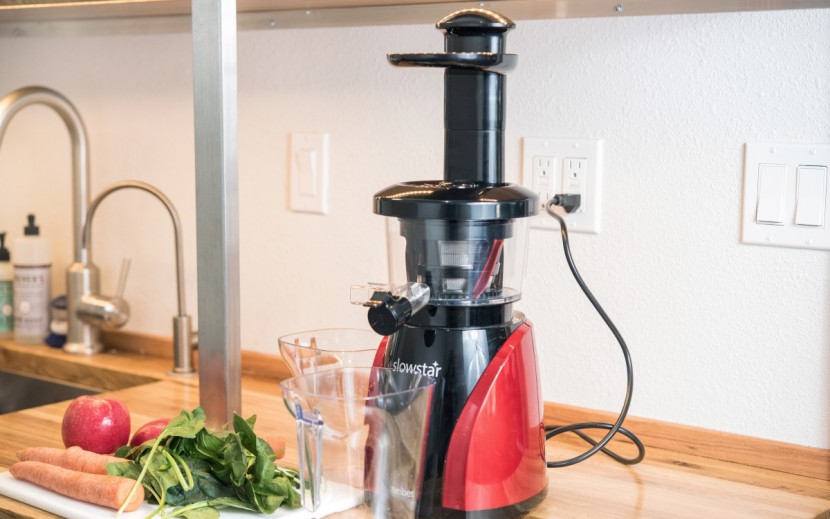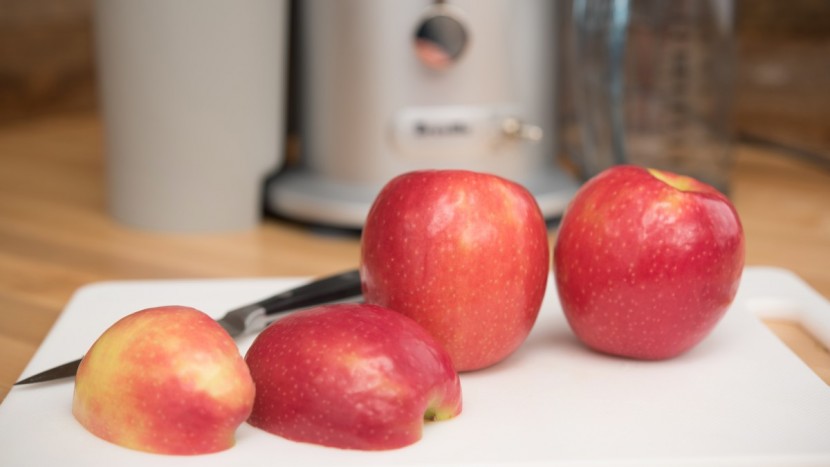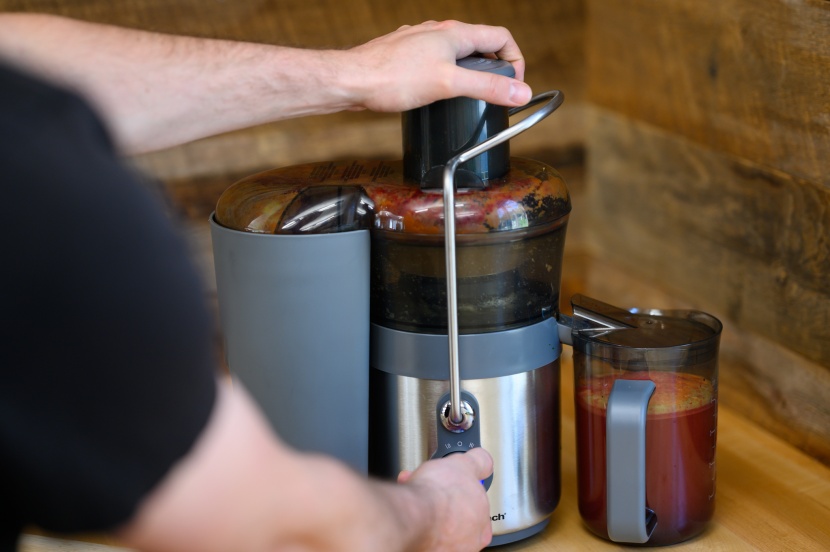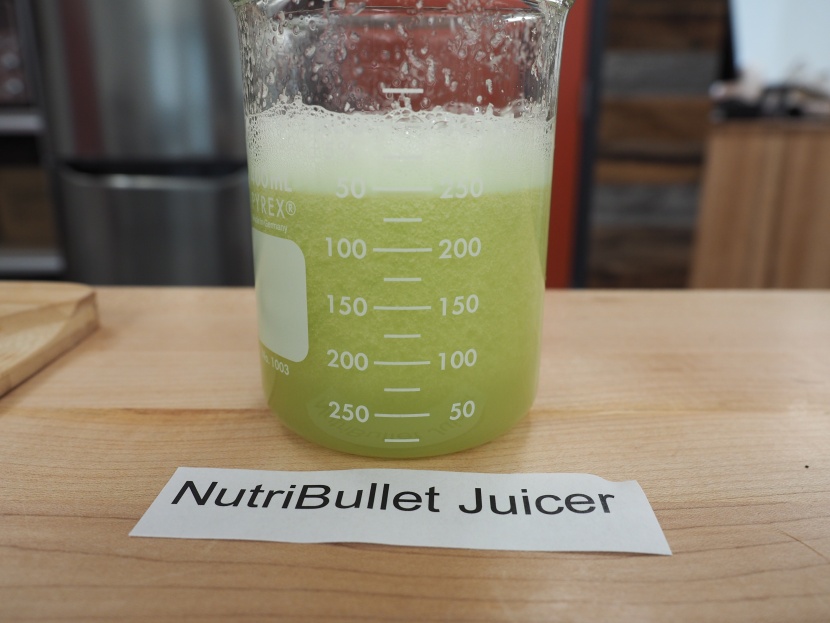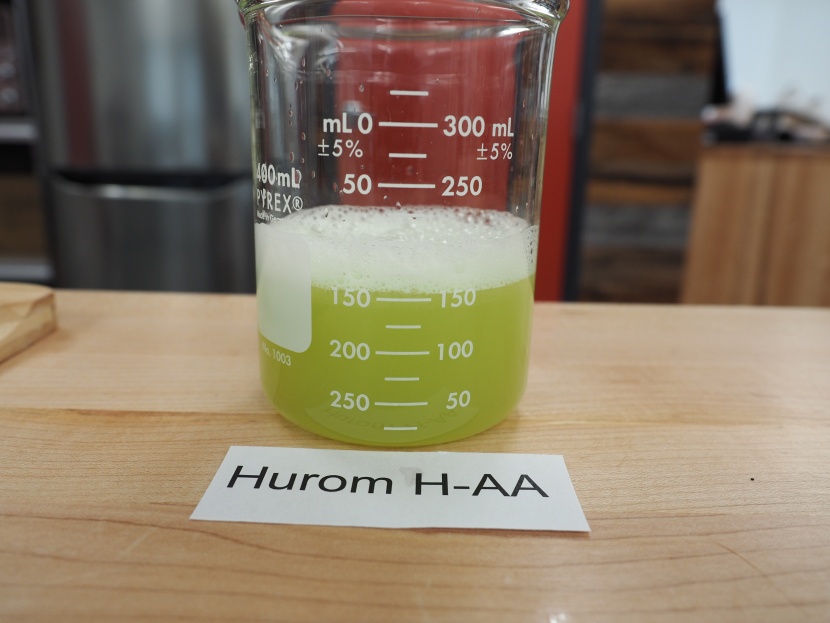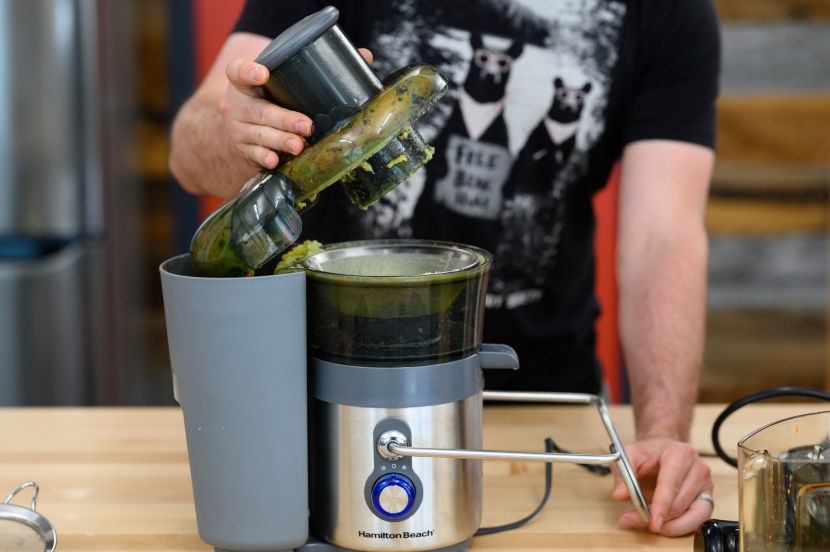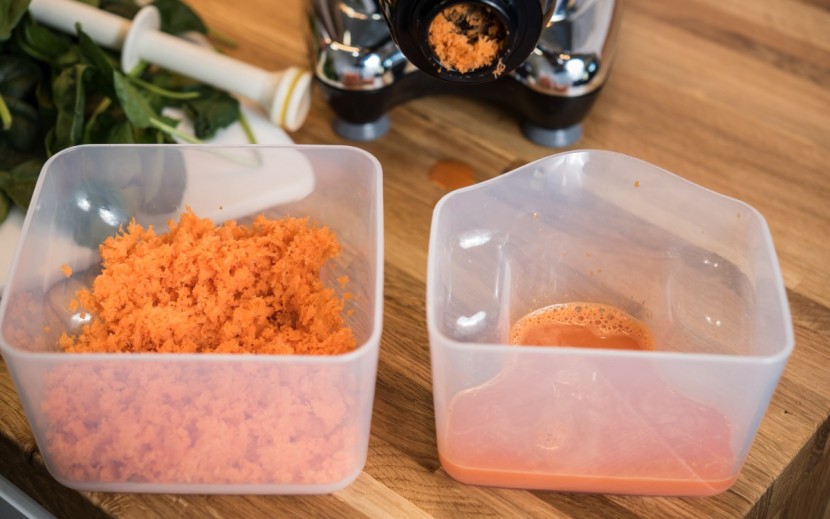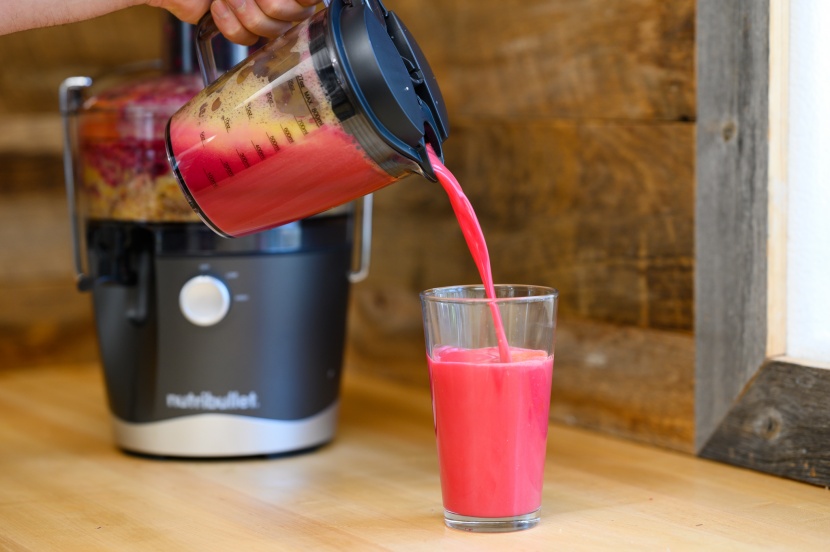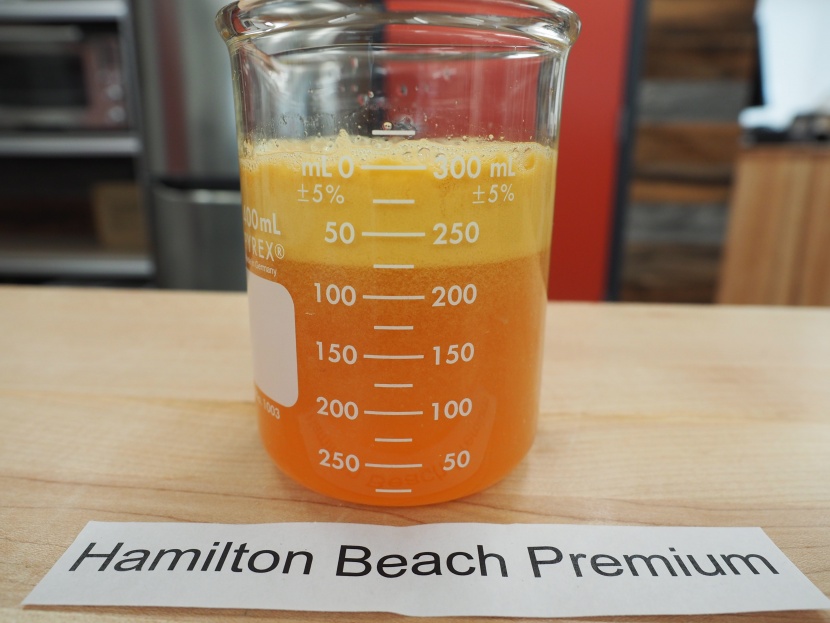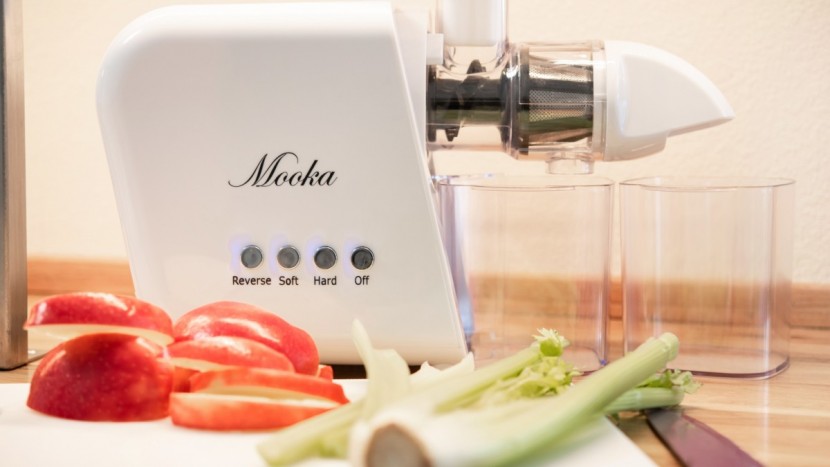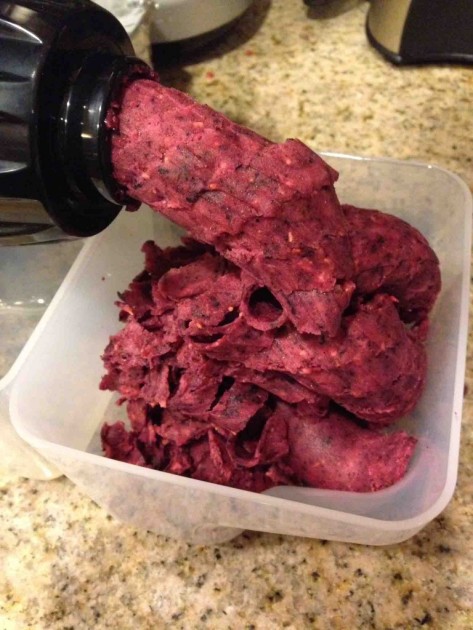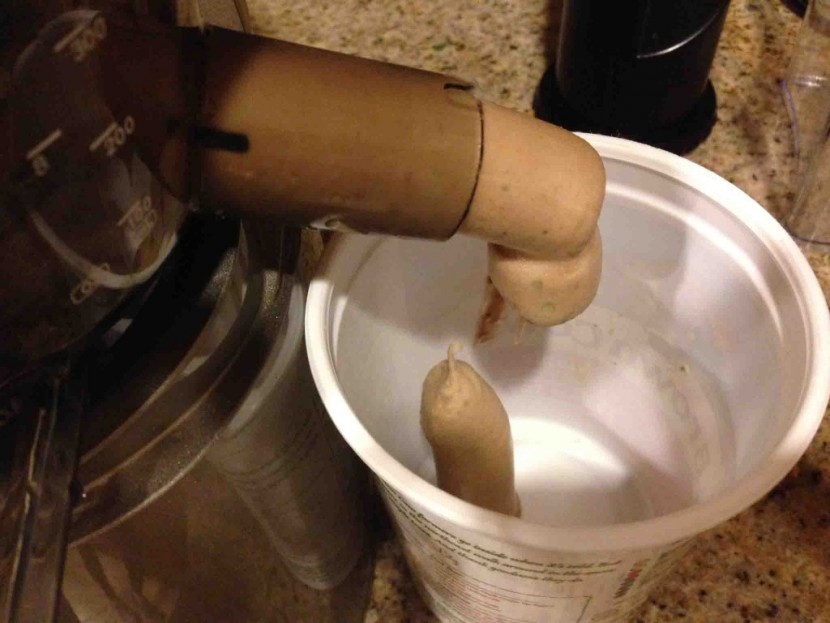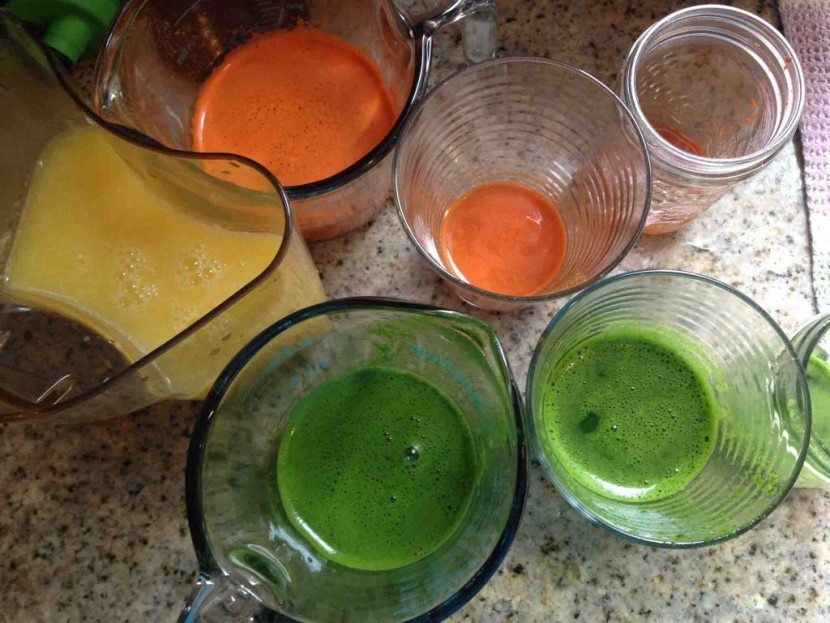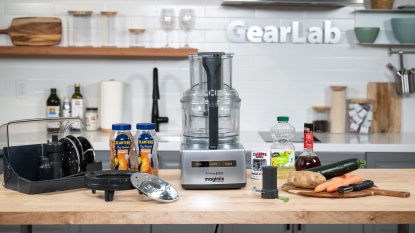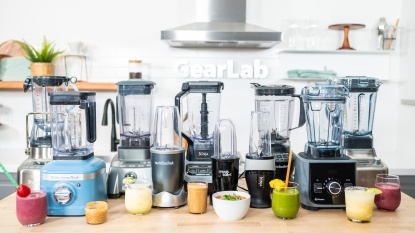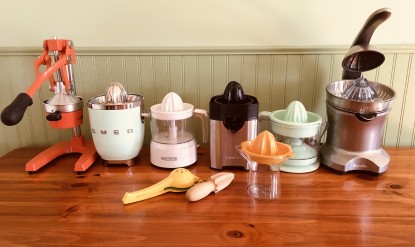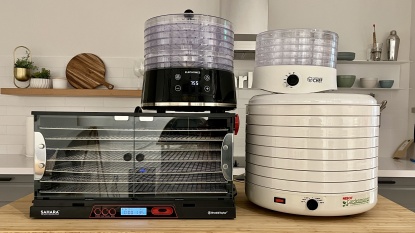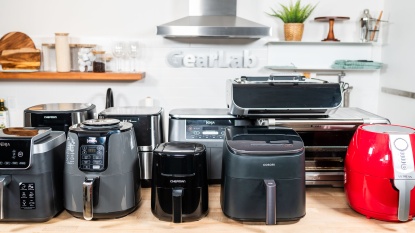There's no question that many of us could incorporate more fruits and vegetables into our diets. Beyond the over-hyped health fads and overpriced store-bought bottles, owning a top-ranked juicers is a simple way to create delicious and refreshing drinks from your favorite produce right at home. We're all about the gear here, so we won't attempt to make any subjective statements about potential health benefits. For practical purposes, juicing can help you quickly and easily incorporate the essential nutrients from fruits and vegetables into a healthy, whole food diet. In this article, we present the different types of juicers readily available for the home market, weigh the pros and cons of each type, and then lay out a step-by-step guide for selecting the right product for your kitchen.
Why Buy a Juicer?
For many, juicing is a fun and different way to incorporate fresh fruits and vegetables into their diets. For others, juicing is more about maximizing their daily nutrient intake. And for some, they simply enjoy juice more than eating whole fruits and vegetables. Juicing is convenient, and getting a boost of your recommended daily vitamins and minerals from one glass of juice is enticing. Just remember that you get out what you put in — the nutritional value and caloric content of a glass of juice will change a lot depending on the quality of the ingredients.
Juicing vs. Blending?
There is a debate going on at the moment in the world of fruit and vegetable drinks: is juicing or blending the better option? The folks at WebMD have an informative article on the differences between juicing and blending that helps highlight the pros and cons of each.
Types of Juicers
Much like other specialty drinks, there are a lot of opinions surrounding the topic of juice. Not only can it be difficult to identify the subtle differences between various juicers on the market, but to make matters even more complicated, marketing teams often misuse terms for the sake of advertising. While we would all love a professional cold-pressed juicer, the price alone — even for a base model — is enough to stop most of us in our tracks. So what are the best options for the average home kitchen?
Centrifugal Juicers
These models work using their namesake centrifugal force. A cylindrical blade spins at thousands of rotations per minute (RPM), chopping up produce and throwing the juice at high speed outward, through a sharp screen that acts as a strainer — think of a microplane grater to imagine how the sharp screen works. That is why they are sometimes referred to as “fast juicers.” Centrifugal juicers are some of the most popular models for home use because they are often cheaper and thus relatively more accessible. As a result, these tend to be the best option for juicing “beginners.”
Pros
- Inexpensive
- Fast juice extraction
- Often able to take full fruits and vegetables, minimizing food preparation
- Minimal countertop space
Cons
- Juice tends to separate and break down quickly; best to drink fresh juice right away
- Lower juice yields due to less efficient process
- Doesn't handle leafy greens well and can only process produce
- Noisy
Myths About Temperature
The Breville “Juicing Science” team put out another study to dispel the myth that centrifugal, or “fast juicers” generate more heat than “slow,” or masticating juicers. The theory is that heat causes juices to oxidize more quickly, which leads to the breakdown of vitamins and minerals. Keep in mind that the nutrients of fruits and vegetables begin to break down — or “denature” — at around 118°F.
When the team averaged the juice temperature of various produce at a room temperature of 68°F, they found that the average juice temperature from a masticating ("slow") juicer was 70.9°F, while the average juice temperature from the centrifugal ("fast") juicer was 70.3°F. Not only are the temperatures for both well below the denaturing point, but they are negligibly different, and technically a masticating juicer creates more heat!Masticating Juicers
These juicers are commonly referred to as “slow juicers.” Slow juicers use an auger that rotates on the order of tens to hundreds of RPM (rather than thousands) to crush produce and force it through a sharp screen — that, just like a centrifugal model, acts as a strainer. It is important to note that while many companies advertise these models as “cold-pressed juicers,” they are not a juice press, which will cost you thousands of dollars as opposed to a few hundred.
Pros
- Good for juicing leafy greens
- Higher juice yields, regardless of produce type
- Versatile: you can use them to make other things like nut butter, baby food, and sorbets with frozen fruits
- Less oxidation means that juice won't breakdown quite as quickly
Cons
- Slower to extract juice
- Many masticating models have narrow chutes and often require more food preparation
- Juices can be bitter, as the process can introduce solids like skins and seeds without proper prep
- More expensive
Myths About Nutrient Content
One more study from the “Juicing Science” team at Breville has shown that while there are differences between centrifugal and masticating juicers in terms of vitamin extraction, the results are highly variable, and in the end, not very significant.
When the team averaged all of the percentages of vitamins and minerals extracted from various produce, they found that masticating juicers retained 83% of nutrients relative to the whole fruit, and centrifugal juicers were virtually identical, retaining 82% of nutrients relative to the whole fruit.What Is the Right Juicer for Me?
Now that you're a bit more familiar with the different models available, let's consider a few of the important personal factors that go into choosing the right juicer for your own kitchen. Of course, we all have different wants and needs, but there are several key aspects related to lifestyle and convenience that we want to highlight first. Before jumping to choosing a product, ask yourself a few of the following questions first:
What Do You Plan to Juice?
There are very few fruits and vegetables out there that you cannot juice, so really, the options are only limited by the capabilities of your juicer, your imagination, and the types of food available in the produce section and at your local farmer's market. You may have grand visions of juicing kale and parsley for a cleanse, only to find that those juices are actually unpalatable to you. It is important to have a rough sense of what types of produce you plan to juice, as this can influence the type of juicer you plan to buy.
For testing purposes, we break down produce into three general categories relative to how they go through a juicer and including both fruits and vegetables. Soft produce included things like apples, oranges, cucumbers, and celery. Hard produce included carrots, beets, and sweet potatoes. Leafy greens had commonly juiced greens like spinach, kale, and wheatgrass.
Juicing Citrus
If you have the simple goal of a fresh glass of orange juice to go with breakfast, then a top-ranked citrus juicer may be what you're looking for. Just be aware that these presses really are citrus-specific. So if you even want to consider other types of fresh juice, it is best to stick with the full-size models featured in this review.
Based on our testing, we determined that masticating models generally do a better job at extracting the maximum amount of juice from leafy greens like spinach and kale. But if you are a carrot juice person, then the high-speed motor of a centrifugal model makes short work of hard roots. And wide-mouthed juicers — both masticating and centrifugal — help cut down on prep time since they can take on whole, soft fruits like apples.
How Often Will You Use Your Juicer?
Frequency of use will factor into how much money you decide to spend on a machine, as well as in other considerations like design, size, weight, and durability. If you are new to juicing and unsure of whether or not you'll even enjoy the outcome, then you probably shouldn't invest in one of the top models. The Hamilton Beach Big Mouth delivers great quality juice at a fraction of the cost of other models featured in our review. But if you're already well-acquainted with juicing, or if you know you will be making juice frequently, then you likely will be better off investing upfront for a higher-end machine. Most of the high-end models are built with higher quality components, offer consistently great performance, and feature extended warranties when compared to more price-point models.
Where Am I Going to Put a Juicer?
Indeed, the best reminder to use your new juicer is to leave the appliance out on the countertop. But countertop space is valuable real-estate in the kitchen, and this option isn't always possible due to interference with other appliances or lack of counter space altogether. When selecting a model, take your kitchen layout into account, including the location of electrical outlets. Measure the space you want to use and compare those dimensions to the product specifications to figure out how everything will fit. For storage, consider the size and weight of the juicer. If the appliance is too bulky, it may not be able to stash away in a cabinet, and a heavy juicer may discourage you from taking it in and out if it cannot be left on a countertop. Again, measure your options and then compare them to product specifications to find the best fit for your kitchen.
Choosing the Right Juicer
With those initial considerations in mind, let's walk through some other questions related to more product-specific details. The following step-by-step guide will help you ultimately choose the best juicer based on your needs and budget.
Convenience
Many folks who lead busy lives are drawn to juicing for the convenience of boosting their daily nutrient intake with a fresh glass of juice. While it is easy to grab a bottle from the refrigerator shelf at your local health foods store, what isn't readily apparent is all of the preparation, cleaning, and planning behind what has become a simple staple of modern convenience. So ask yourself: how much time do you have to make juice, and when?
Food Preparation
How much time are you willing to spend preparing ingredients? Like all fresh foods, the quality of the ingredients combined with the care of preparation will significantly impact the excellence of your juice. But if you are particularly pressed for time, then you'll want to consider a centrifugal model. These types of products make a great glass of juice, and they make it quickly. Very little preparation is required, as they often have large chutes that can accommodate full produce.
While centrifugal juicers may appear easier in the short run, they will likely prove less useful for those who want to make juice for later. Due to the process, juice from a centrifugal machine is highly oxidized, causing the juice to separate and break down rather quickly; these models are best for those who want to make fresh juice to drink right away. The slower process of a masticating juicer results in less oxidation; juice should still be consumed promptly but is much more refrigerator-shelf-stable in comparison.
Cleaning
There are no two ways around it: the whole process of juicing can be very messy. As with so many things in the kitchen, what is cooked must then be cleaned. Food preparation is its own matter, but this can certainly be managed by opting for a wide-mouthed juicer that can accept whole fruits and vegetables — this feature is often found on centrifugal juicers but is becoming more common with masticating models as well.
Incidentally, an appliance that is easy to set up and use is also likely going to be easy to clean. Simpler models — often found at a lower baseline price point — will have fewer parts to deal with and thus less to clean. If you are on a tight schedule, focus on models with dishwasher-safe components. It is interesting to consider that even though centrifugal juicers are often easy to set up and use, many models have parts that are not dishwasher safe. So while masticating juicers might take more time in terms of food preparation, you can often save time on the back end in terms of cleaning.
Have You Considered Composting Your Waste Products?
Many folks only focus on the end product — the juice — but there is a lot of the whole fruit or vegetable left behind in the process. Just as the juice holds essential vitamins and minerals that give your system a boost, the leftover pulp retains much of the same vital nutrients, and that “waste product” can be used to give your home garden a boost, too!
Juice Quality
We all enjoy a variety of tastes and textures, each with our own individual preferences. But there are a few key aspects of quality juice we should all agree upon. For the sake of choosing the best quality juicer to produce the best quality juice, let us all agree that the ideal juice will have:
- Flavors that are bright, clean, and tasty (i.e., it tastes like what you put in)
- A texture that is smooth, consistent, and has very few solids
- Minimal separation and is shelf-stable (in the refrigerator) for days
- Is nutrient-rich and has the highest yields of juice relative to the amount of produce used
Understanding Nutritional Value
The Juice Recipe Builder is a fun, free resource to help you better understand what's going into your juice and what you're getting out of it in terms of nutritional value. It will even help you choose ingredients that go well together!
Juice: Recipes for Juicing, Cleansing, and Living Well is a recipe book and another great resource written by the founders of the popular, California-based Pressed juicery chain.Texture and Taste
Quality related to texture, taste, and shelf-life often come down to the quality of food preparation. Compared to commercially bottled juice from a cold-press machine, juices from both centrifugal and masticating machines can contain up to 30% solid produce matter, which can result in a “pulpy” juice — at its worst, this may result in an unappetizing “chunky” texture. Since both models ultimately rely on a similar sharp screen filter to separate out pulp, you can help yourself by properly preparing your fruits and vegetables. Things like seeds, stems, and skin can also negatively affect taste, and are often the reasons hiding behind an off-putting bitterness.
Separation and Yield
When it comes to quality, it is best not to expect the same results from a personal, at-home model as those produced by commercial-grade, cold-pressed juicers used to make the bottled juices bought at the store. But that is not to say that you cannot make great juice!
Although juice separation is all but inevitable with these types of juicers, you can prolong the shelf-life by increasing the percentage of fruit flesh in your juice — again, this ultimately comes down to preparation. But it is also important to recognize that many of the qualifying factors related to quality directly follow along the lines of price point. Many of the top-performing models we tested have very similar yields — that is, the amount of juice compared to the amount of whole produce — regardless of whether they are masticating or centrifugal juicers.
Is Speed a Factor in Juice Quality?
Many sources cite speed as a major factor in the quality of juice. But different operating speeds (measured in rotations per minute, or RPM) cannot accurately be used as a tool to compare similar types of juicers. There tends to be very little difference when directly comparing various masticating models to one another, and the same goes for directly comparing centrifugal models.
However, there is a significant difference between masticating models — working at 100s of RPM — and centrifugal models that work at 1000s of RPM. Although the studies performed by the “Juicing Science” folks at Breville (cited above), show that there is very little difference in the nutrient content of a juice regardless of whether it comes from a centrifugal or masticating juicer, there can be noticeable differences in texture, taste, shelf-life, and juice yields between the two types.Budget
For many, this may be the factor that brought you to this article in the first place: you recognize that the economics of buying fresh juice is not sustainable, and are now looking to squeeze your own, right at home. It is important to factor in externalities to your budget considerations, including, first and foremost, your time. Weigh the cost of a new juicer against the frequency of juicing, which should be considered against the durability of a product. For instance, if you plan to juice daily, a slight investment up-front will likely pay off in both the short-term and certainly over the extended lifespan of a quality appliance. Acknowledging all of these factors, our reviewers consider the value of a product — that is, its performance, durability, and ease of use weighed against its price. And it is important to remember that the most expensive product isn't always the most valuable.
Versatility
If you want a versatile machine that can do more than just juice, you will want to take a closer look at a masticating model. Some of these products not only make great glasses of juice, but they can also make smoothies, frozen sorbet, nut butter, nut milk, and even baby food. But considering versatility as a factor of budget, extra features and functions mean that these models tend to carry a higher price tag. It is also important to note that not all masticating models have these extra capabilities.
Conclusion
Juicers available for the home market can vary widely, and choosing the right one for your own kitchen often comes down to a question of time and money. Centrifugal juicers tend to be more convenient but don't necessarily produce the best juice. Masticating juicers pay off in terms of yield and quality but may be too much of an investment depending on your frequency of use. For those planning to make fresh juice daily, often spending a bit more will improve your juicing experience, as these quality models tend to offer a better value, balancing increased performance and long-term durability.

